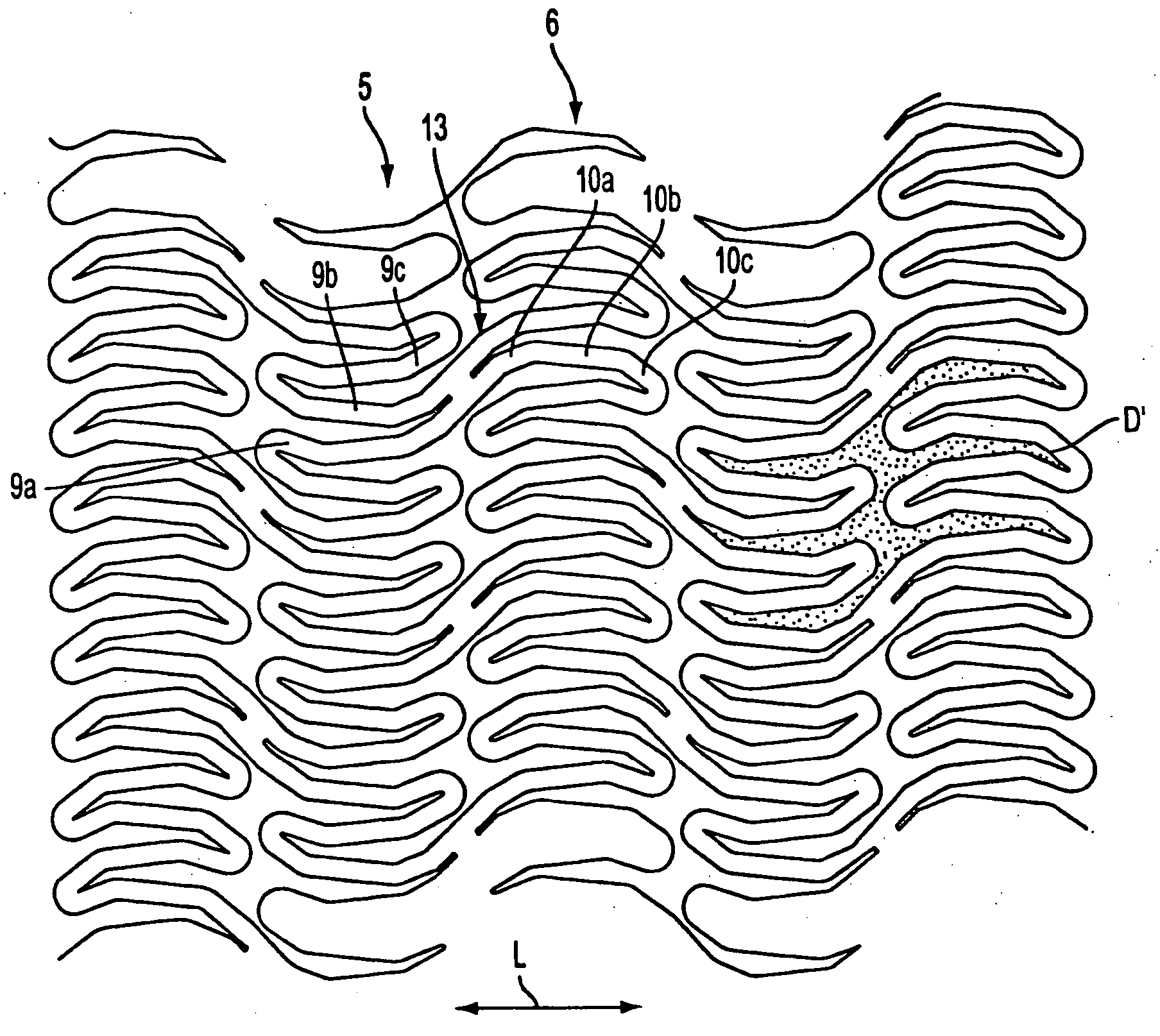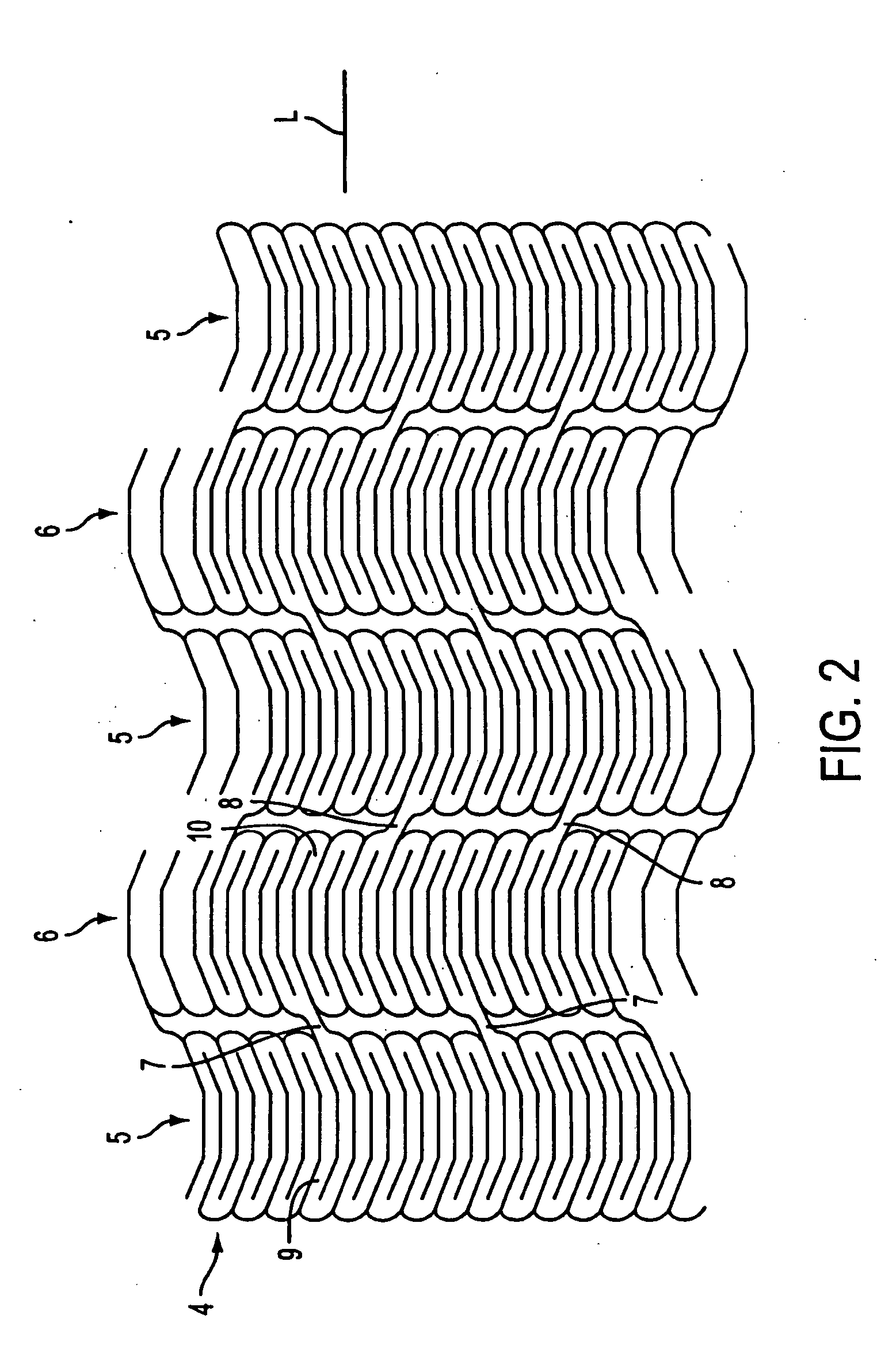Methods and apparatus for a drug-coated stent having an expandable web structure
a web structure and stent technology, applied in the field of stents, can solve the problems of decreasing the length of the stent, foreshortening along the longitudinal axis, undesirable shortening, etc., and achieve the effect of reducing the foreshortening
- Summary
- Abstract
- Description
- Claims
- Application Information
AI Technical Summary
Benefits of technology
Problems solved by technology
Method used
Image
Examples
Embodiment Construction
[0030] Referring to FIG. 1, stent 1 comprises tubular flexible body 2. Tubular flexible body 2, in turn, comprises wall 3 having a web structure, as described hereinbelow with respect toFIGS. 2-9. Stent 1 and its web structure are expandable from a contracted delivery configuration to an expanded deployed configuration. Depending on the material of fabrication, stent 1 may be either self-expanding or expandable using a balloon catheter. If self-expanding, the web structure is preferably fabricated from a superelastic material, such as a nickel-titanium alloy. Furthermore, stent 1 preferably is fabricated from biocompatible or biodegradable materials. It also may be radiopaque to facilitate delivery, and it may comprise an external coating C that retards thrombus formation or restenosis within a vessel. The coating alternatively may deliver therapeutic agents into the patient's blood stream.
[0031] With reference to FIGS. 2-4, a first embodiment of the web structure of stent 1 is des...
PUM
 Login to View More
Login to View More Abstract
Description
Claims
Application Information
 Login to View More
Login to View More - R&D
- Intellectual Property
- Life Sciences
- Materials
- Tech Scout
- Unparalleled Data Quality
- Higher Quality Content
- 60% Fewer Hallucinations
Browse by: Latest US Patents, China's latest patents, Technical Efficacy Thesaurus, Application Domain, Technology Topic, Popular Technical Reports.
© 2025 PatSnap. All rights reserved.Legal|Privacy policy|Modern Slavery Act Transparency Statement|Sitemap|About US| Contact US: help@patsnap.com



